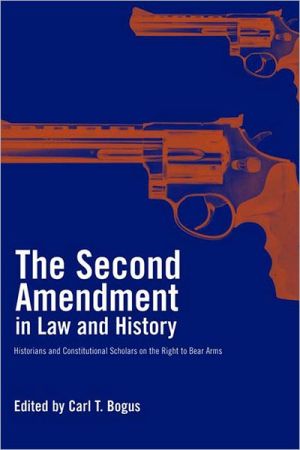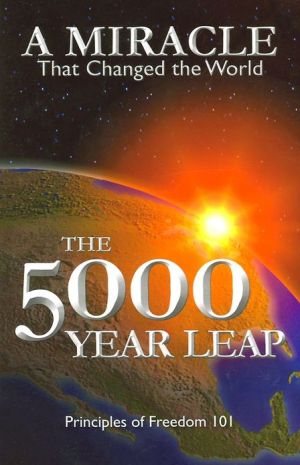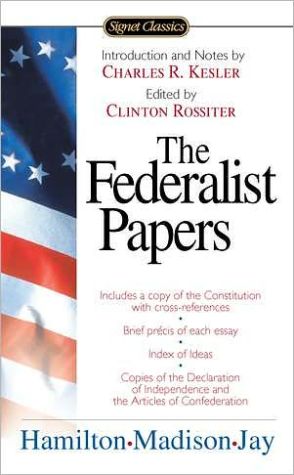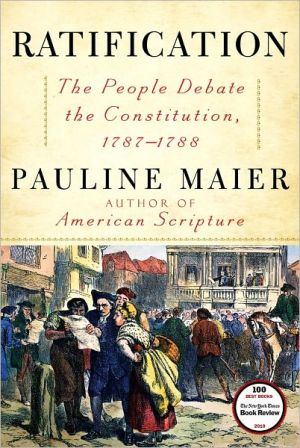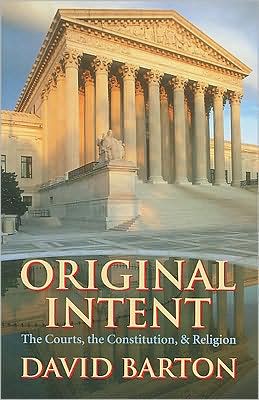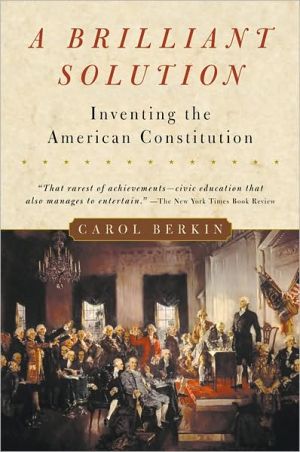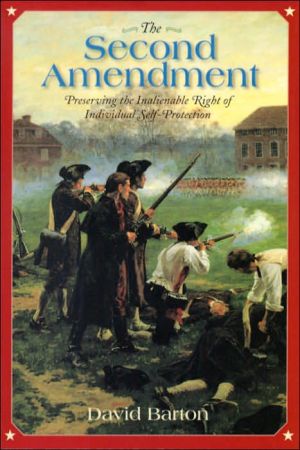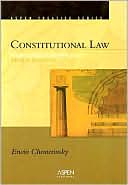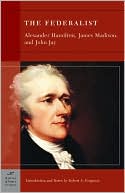Second Amendment in Law and History: Historians and Constitutional Scholars on the Right to Bear Arms
In The Second Amendment in Law and History, the nation's leading historical and constitutional scholars -- including Jack Rakove (author of the Pulitzer Prize-winning Original Meanings), Michael Bellesiles (author of Arming America), Michael Dorf, Daniel Farber, and Paul Finkelman -- marshal a broad range of historical and legal arguments that will fascinate general readers and policy specialists alike. In ten wide-ranging essays, The Second Amendment in Law and History uncovers a rich...
Search in google:
In The Second Amendment in Law and History, the nation's leading historical and constitutional scholars -- including Jack Rakove (author of the Pulitzer Prize-winning Original Meanings), Michael Bellesiles (author of Arming America), Michael Dorf, Daniel Farber, and Paul Finkelman -- marshal a broad range of historical and legal arguments that will fascinate general readers and policy specialists alike. In ten wide-ranging essays, The Second Amendment in Law and History uncovers a rich history of lawmaking, constitutional development, and social change, revealing current gun policy to be radically out of step with deep historical and constitutional trends. The essays touch on leading constitutional debates -- including the nature of constitutional interpretation, the relationship between federal and local authority, and the philosophical origins of American constitutionalism -- as well as key historical issues surrounding gun ownership and the constitutional right to bear arms. The Second Amendment in Law and History is a clear and comprehensive guide to an issue that affects the lives of millions of Americans. Publishers Weekly There are two opposing theories about what the Second Amendment was designed to protect. Over a century of federal court rulings have established that it guarantees the right to bear arms within an established (i.e., formal and public) militia. The first law review article asserting an individual's right to own firearms for self-defense (or sport) did not appear until 1960, and yet the balance has swung in the individualist direction, with Republicans, gun lobbyists and even high-profile liberals endorsing that view. This lucid 10-essay collection by historians and legal scholars soberly takes on the entire revisionist anti-gun control project. Setting the stage, Bogus and Robert Spitzer analyze its history of logic and legal scholarship. (Spitzer focuses on how student-run, non-peer-reviewed law journals are vulnerable to producing bodies of error-filled work.) Pulitzer winner Jack Rakove (Original Meanings) and Paul Finkelman argue that the amendment's original intent was to mediate state and federal power over militias, while Michael Bellesiles (Arming America) explores late 18th-century gun control. Steven Heyman explains how the natural law tradition supports a collective rather than an inalienable individual right. The most powerful essays take dead aim at the practice of "law office history," whereby quotes and passages favorable to the individual rights side are excerpted without regard to a document's larger context. This outstanding discussion will appeal mainly to those most passionately committed to the issue of gun ownership, but it will inform discussions in the media on a heated subject. (Jan.) Copyright 2001 Cahners Business Information.
1The History and Politics of Second Amendment Scholarship: A Primer12Lost and Found: Researching the Second Amendment163The Second Amendment in Action484The Second Amendment: The Highest Stage of Originalism745"A Well Regulated Militia": The Second Amendment in Historical Perspective1176Muting the Second Amendment: The Disappearance of the Constitutional Militia1487Natural Rights and the Second Amendment1798To Hold and Bear Arms: The English Perspective2079Disarmed by Time: The Second Amendment and the Failure of Originalism22810What Does the Second Amendment Mean Today?247Notes283Index349
\ Publishers WeeklyThere are two opposing theories about what the Second Amendment was designed to protect. Over a century of federal court rulings have established that it guarantees the right to bear arms within an established (i.e., formal and public) militia. The first law review article asserting an individual's right to own firearms for self-defense (or sport) did not appear until 1960, and yet the balance has swung in the individualist direction, with Republicans, gun lobbyists and even high-profile liberals endorsing that view. This lucid 10-essay collection by historians and legal scholars soberly takes on the entire revisionist anti-gun control project. Setting the stage, Bogus and Robert Spitzer analyze its history of logic and legal scholarship. (Spitzer focuses on how student-run, non-peer-reviewed law journals are vulnerable to producing bodies of error-filled work.) Pulitzer winner Jack Rakove (Original Meanings) and Paul Finkelman argue that the amendment's original intent was to mediate state and federal power over militias, while Michael Bellesiles (Arming America) explores late 18th-century gun control. Steven Heyman explains how the natural law tradition supports a collective rather than an inalienable individual right. The most powerful essays take dead aim at the practice of "law office history," whereby quotes and passages favorable to the individual rights side are excerpted without regard to a document's larger context. This outstanding discussion will appeal mainly to those most passionately committed to the issue of gun ownership, but it will inform discussions in the media on a heated subject. (Jan.) Copyright 2001 Cahners Business Information.\ \ \ \ \ Library JournalThe articles in this collection support an interpretation of the Second Amendment as a collective rather than an individual right the right of the states to maintain an armed militia. The authors draw on documents from the time of the amendment's ratification, relevant historical events in Britain and the United States, and legal analysis. Authors discuss state/colonial gun control already in place in the 18th century, the contrast between the militia then and today's National Guard, and what the authors believe are the fallacies of the argument that the amendment protects an individual right to own firearms. The contributors, including well-known scholars, are all academics, mostly in law but also in political science and history. This is a clear, thorough, well-documented look at the historical and legal record. There are hundreds of books available on the right to bear arms, but few scholarly books on the history of the Second Amendment. Highly recommended for academic and larger public libraries. Mary Jane Brustman, SUNY at Albany Libs. Copyright 2001 Cahners Business Information.\ \ \ Kirkus ReviewsA collection of scholarly legal and historical essays that unanimously dispute the credibility of individualist interpretations of the Second Amendment. His numerous law review articles on the subject made Bogus (Law/Roger Williams College of Law) a natural choice to assemble this compilation of ten important articles about the American right to bear arms. The essays, by distinguished scholars like Pulitzer Prize-winning Jack Rakove, collectively argue that historians and lawyers who interpret the Second Amendment as protection of the individual citizen's right to own firearms do so only by twisting historical facts. Bogus's introduction maintains that the individualist interpretation of the amendment did not gain academic or legal respectability until late in the 20th century. A closer inspection of these individualist arguments, he asserts, establishes that the framers of the Constitution clearly intended the Second Amendment to protect a state militia's check on potential misuse of the federal standing army. Other contributors offer different perspectives on this same basic interpretation. Steven J. Heyman contests the idea that the amendment protects a natural right to rebellion; Lois Schwoerer challenges the argument that British legal precedent provides a foundation for the individual right to bear arms; Michael Dorf notes both how little historical evidence supports the individualist argument and how it has become constitutionally meaningless for 21st-century America. Since all the impressive scholarship on display builds from the same basic hypothesis, however, it becomes increasingly redundant. The narrow focus on historical considerations ultimately raises suspicions that thistendentious volume protests too much. Even so, anyone interested in either side of the divisive Second Amendment debate will profit from reading this collection-the pro-gun audience to approach their argument more thoughtfully, the anti-gun people to acquire fresh ammunition for their views.\ \
